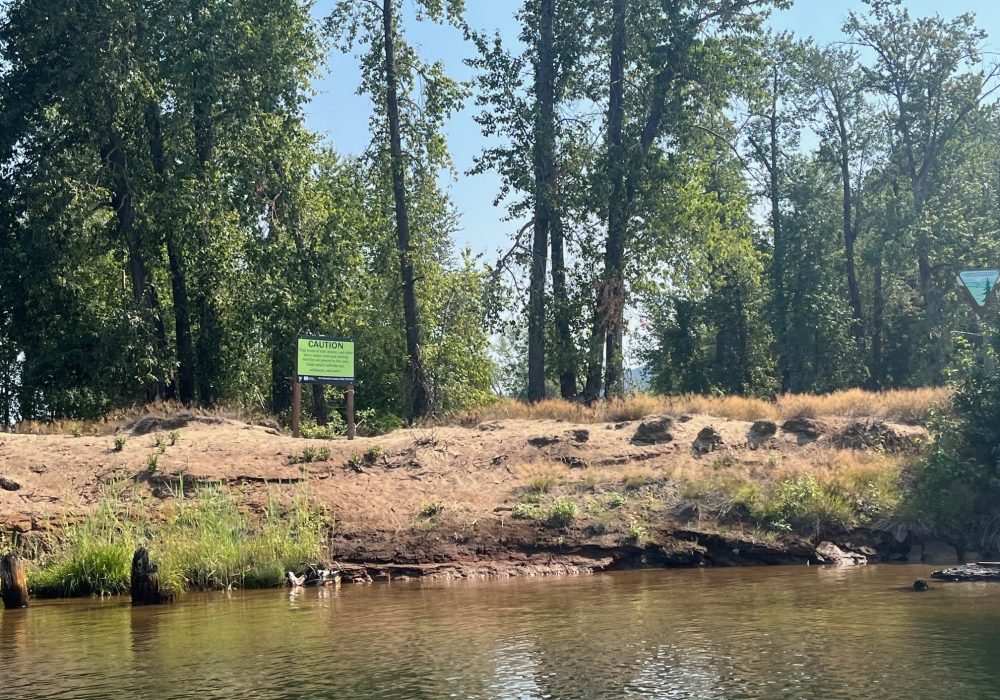The Bunker Hill Superfund Site stretches across the Silver Valley and Coeur d’Alene Basin and is a great place to live, work, and play. Knowing the facts about this area will help keep you and your family safe from lead exposure. Past mining practices left behind large amounts of lead and other metals in soils and river sediments. Since the 1980s, great progress has been made in reducing risks and exposure to contamination. For example, over 7,000 properties have been cleaned up. Even so, lead and other metals remain below clean barriers and in areas that have not been cleaned up.
Learn more about health and lead exposure in the resources below:
- Lead Facts
- Lead in Soil
- Lead in Idaho
- Childhood Lead Poisoning Prevention Program
- Toxic Substances Factsheets (ToxFAQx) for Lead, Arsenic, and Cadmium
- Protecting Your Family from Sources of Lead
- Healthy Living in the Silver Valley and Coeur d’Alene Basin
- Have Fun AND Stay Safe in the Coeur d’Alene Basin
- Bunker Hill—Industrial Exposure
- Bunker Hill—Protect your Family from Lead at Home
- Lead Safe Recreation-Historic Mine Sites
- Idaho Lead Risk Assessment and Blood Lead Testing Recommendations
- Lead Risk Assessment Questionnaire
- Lead Risk Evaluación de riesgos de plomom
- Lead and Copper Water Sampling Informational Video
- Central Shoshone County Water District 2024 Consumer Confidence Report

Health Effects from Lead Exposure
There are two types of lead exposure:
- Chronic—exposure that continues or recurs over a long period of time (less than three months)
- Acute—a single exposure that causes severe harm or even death
How does lead exposure affect the body?
When lead is introduced to the bloodstream, it disrupts the blood’s ability to deliver oxygen, nutrients, and hormones. This disruption affects adults and children differently:
Children—slowed growth, developmental delays, hearing problems, lower IQ, behavioral changes such as irritability, iron deficiency and anemia, brain and nervous system damage, learning and behavior problems, speech issues, difficulty focusing and paying attention, headaches, colic, and death
Adults—hypertension and high blood pressure, iron deficiency and anemia, hearing loss, memory and concentration problems, muscle and join pain, reproductive problems such as infertility (men) and miscarriages and premature births (women), kidney damage, behavior changes such as irritability or mood disorders, nervous system damage, abdominal pain, and headaches
Bunker Hill Blood Lead Levels
Blood lead monitoring is available free of charge to those who live, work, and recreate in the Bunker Hill Superfund Site. Having your blood lead levels checked is the only way to detect lead exposure. Blood lead testing began in 1974 in response to community-wide lead exposure following the Bunker Hill Baghouse Fire. Panhandle Health District has offered this testing annually since 1988. In 1985, the State of Idaho initiated the Lead Health Intervention Program (LHIP) with the goal of further reducing blood lead levels in children. Learn more about blood lead trends in children who have participated in the LHIP.
The following documents provide further evaluations of children’s blood lead levels:
Bunker Hill House Dust Lead Levels
Lead in house dust is a key exposure pathway to young children playing indoors. Exterior soils contaminated with lead and other metals can be transported into a home on shoes, dirty clothing, and dusty recreational equipment. Sampling house dust helps to better understand current exposures, determine how to reduce risk, and recognize how the cleanup has changed lead levels in homes.
The graphs below show the trends in house dust results:
- Vacuum Dust Lead Concentrations, 1988-2022
- Dust Mat Lead Concentrations, 1996-2002
- Percentage of Dust Samples with a Lead Concentration-BOX, 1988-2018
- Percentage of Dust Samples with a Lead Concentration-BASIN, 1996-2022
The documents below show evaluations of house dust lead levels:
- Bunker Hill Mining and Metallurgical Complex Superfund Site OU1 2013 House Dust and Blood Lead Data and Risk Management Evaluation
- 2000 Interior School Dust Data Summary Report
- Bunker Hill House Dust Pilot Final Remedial Effectiveness Report
- Final Report for the Comparison of HUD Risk Assessment Methodology to Methods Used at the Bunker Hill Superfund Site in Idaho for the Identification of Risk from Lead in House Dust
- Five-Year Reviews
Frequently Asked Questions
For more information on lead exposure and its effects on the body, click here.
